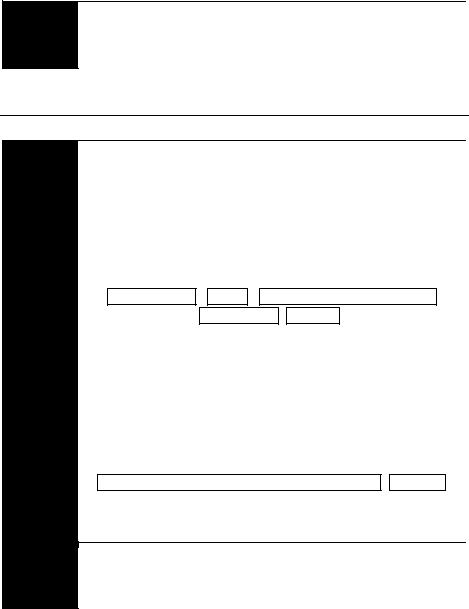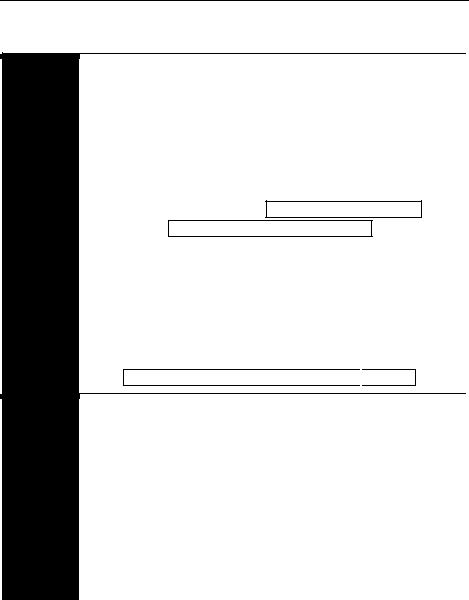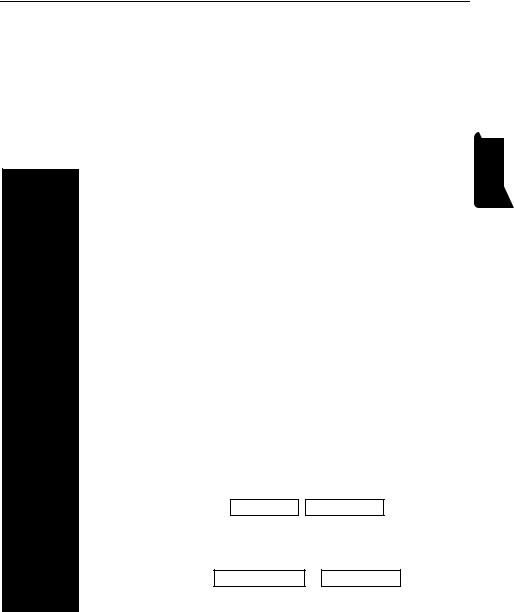
LAW / Referencing for Law Students / AGLC 3rd ed
.pdf
170Part IV — International Materials
•any numerical designation given to the chamber, which should appear in Roman numerals.
Examples
Note
Prosecutor v Tadić (Judgement) (International Criminal Tribunal for the Former Yugoslavia, Appeals Chamber, Case No IT-94-1-A, 15 July 1999).
Prosecutor v Ntaganda (Warrant of Arrest) (International Criminal Court, Pre-Trial Chamber I, Case No ICC-01/04-02/06-18, 22 August 2006).
The International Criminal Court has three types of chambers: Pre-Trial Chambers, Trial Chambers and Appeals Chambers. Other international criminal tribunals and courts often have one or several Trial Chambers and an Appeals Chamber. Such chambers are typically numbered using Roman numerals (for example, ‘Trial Chamber II’).
11.2.5Case Number
Rule The case number should be preceded by the words ‘Case No’. Otherwise, it should adhere to rule 8.2.10. In particular:
•the case number should appear as it does on the judgment cited (including any component specific to that document, where available);
•full stops should not be used in abbreviations, but should be reproduced if they are used within a case number; and
•where there are multiple case numbers, all should be included (preceded by ‘Case Nos’).
Examples Prosecutor v Renzaho (Decision on Motion for Extension of Time for the Filing of Notice of Appeal and Brief in Reply) (International Criminal Tribunal for Rwanda, Appeals Chamber, Case No ICTR-97- 31-A, 22 September 2009) [6].
Prosecutor v Kunarac (Judgement) (International Criminal Tribunal for the Former Yugoslavia, Trial Chamber II, Case Nos IT-96-23-T and IT-96-23/1-T, 22 February 2001).

Australian Guide to Legal Citation 171
Note The case number should be that assigned by the relevant international criminal tribunal or court.
11.2.6Full Date
Rule |
The full date of the judgment cited should be included. |
|
|
Example Prosecutor v Kambanda (Decision Ordering Continued Detention)
(International Criminal Tribunal for Rwanda, Trial Chamber I, Case No ICTR-97-23-T, 1 May 1998).
11.2.7Pinpoint Reference
Rule Pinpoint references should adhere to rules 1.1.5–1.1.6 and should be to paragraph numbers.
Example Prosecutor v Jokić (Judgement on Sentencing Appeal) (International Criminal Tribunal for the Former Yugoslavia, Appeals Chamber, Case No IT-01-42/1-A, 30 August 2005) [24]. [Not: … 9 [24].]
11.2.8Identifying Judges
Rule Judges’ names should be included after pinpoint references in accordance with rule 9.2.8. In particular:
•where a judgment (including a ‘principal judgment’) of a tribunal or court is referred to, neither the judges’ names nor ‘(The Court)’ should be included after a pinpoint reference;
•judges’ names should be included after pinpoint references to separate or dissenting opinions; and
•‘Judge’ should be written out in full before a judge’s name.
Examples Prosecutor v Jelisić (Judgement) (International Criminal Tribunal for the Former Yugoslavia, Trial Chamber I, Case No IT-95-10-T, 14 December 1999) [105].
Crim Int
Tribunals

172 Part IV — International Materials
Prosecutor v Erdemović (Judgement) (International Criminal Tribunal for the Former Yugoslavia, Appeals Chamber, Case No IT-96-22-A, 7 October 1997) [6] (Judge Stephen).
11.3Reports of Cases
Rule It is generally unnecessary to cite reports of judgments of international criminal tribunals and courts due to their wide availability. However, where a judgment is difficult to locate or where there is good reason for doing so, a report of the judgment may be cited.
Reported judgments of international criminal tribunals should be cited as follows:
Parties’ Names ( Phase ) Year, Volume and Report Series
Starting Page , Pinpoint .
Parties’ names and the phase should adhere to rules 11.2.1–11.2.2. The year, report series and starting page should adhere to rules 2.2–2.4. Pinpoint references should adhere to rule 9.2.7. The inclusion of judges’ names should adhere to rule 11.2.8.
The name of the international tribunal or court and the relevant chamber may be included after any pinpoint or judges’ names in accordance with rule 2.6. It should appear in the form:
( Conventional Shortened Name of Tribunal or Court , Chamber )
The name of the tribunal or court and the chamber should adhere to rules 11.2.3–11.2.4.
Example Prosecutor v Blaškič (Objection to the Issue of Subpoenae Duces Tecum) (1997) 110 ILR 688, 693 [15] (International Criminal Tribunal for the Former Yugoslavia, Appeals Chamber).

Australian Guide to Legal Citation 173
11.4Subsequent References
Rule ‘Ibid’ should be used for all materials in this chapter (in accordance with rule 1.4.1).
In other subsequent references:
•citations of the basic documents of international criminal tribunals and courts (see rule 11.1) should adhere to rule 7.6; and
•citations of decisions of international criminal tribunals and courts (see rules 11.2–11.3) should adhere to rule 2.14.
In accordance with rule 2.14, it may be useful to give a decision of an international criminal tribunal or court a short title incorporating its phase or trial/appellate status to distinguish it from other decisions relating to the same parties.
‘Above n’ should not be used for any materials in this chapter.
Examples 24 International Criminal Tribunal for the Former Yugoslavia, Rules of Procedure and Evidence, Doc No IT/32/Rev.44 (adopted 10 December 2009) (‘ICTY Rules’).
…
26ICTY Rules r 3(F).
…
27Serushago v Prosecutor (Reasons for Judgment) (International Criminal Tribunal for Rwanda, Appeals Chamber, Case No ICTR- 98-39-A, 6 April 2000) (‘Serushago Appeal’).
28Ibid [21]–[22].
…
30Serushago Appeal (International Criminal Tribunal for Rwanda, Appeals Chamber, Case No ICTR-98-39-A, 6 April 2000) [27].
Crim Int
Tribunals

174
12 International Economic Materials
12.1World Trade Organization
12.1.1Constitutive and Basic Documents
Rule
Examples
The Marrakesh Agreement Establishing the World Trade Organization should be cited in accordance with chapter 7.
The other agreements and understandings of the World Trade Organization (‘WTO’) are annexed to the Marrakesh Agreement, and should be cited as follows:
Marrakesh Agreement Establishing the World Trade Organization, opened for signature 15 April 1994, 1867 UNTS 3 (entered
into force 1 January 1995) Pinpoint to Relevant Annex (‘ Title of Agreement or Understanding ’).
The title of the relevant agreement or understanding (or a commonly used abbreviated version) should appear after the pinpoint to the annex containing it (in accordance with rule 7.6). Agreements or understandings annexed to the Marrakesh Agreement should not be cited as separate treaties.
Subsequent references should appear in the form:
Short Title of Agreement or Understanding 
 Pinpoint .
Pinpoint .
Marrakesh Agreement Establishing the World Trade Organization, opened for signature 15 April 1994, 1867 UNTS 3 (entered into force 1 January 1995).
Marrakesh Agreement Establishing the World Trade Organization, opened for signature 15 April 1994, 1867 UNTS 3 (entered into force 1 January 1995) annex 1A (‘General Agreement on Tariffs and Trade 1994’).
Marrakesh Agreement Establishing the World Trade Organization, opened for signature 15 April 1994, 1867 UNTS 3 (entered into force 1 January 1995) annex 1A (‘Anti-Dumping Agreement’).

Australian Guide to Legal Citation 175
Marrakesh Agreement Establishing the World Trade Organization, opened for signature 15 April 1994, 1867 UNTS 3 (entered into force 1 January 1995) annex 2 (‘DSU’).
Note Annexes 1A and 4 to the Marrakesh Agreement both contain more than one agreement or understanding. It is thus necessary to include the name of the relevant agreement or understanding as a short title when referring to WTO agreements or understandings other than the Marrakesh Agreement itself (to avoid ambiguity).
12.1.2Official WTO Documents
|
|
|
|
Implementation of |
|
|
|
|
|
|
|
|
Paragraph 6 of the |
WTO Doc |
(2 |
(Decision of |
para |
|
|
Example |
|
Doha Declaration on the |
September |
30 August |
||
|
|
|
WT/L/540 |
2(a) |
||||
|
|
|
|
TRIPS Agreement and |
|
2003) |
2003) |
|
|
|
|
|
Public Health, |
|
|
|
|
|
|
|
|
|
|
|
|
|
|
|
Element |
|
Document Title |
Document |
Full Date |
Document |
Pin- |
|
|
|
Number |
Description |
point |
|||
|
|
|
|
|
|
|||
|
|
|
|
|
|
|
|
|
Rule An official WTO document (except an Appellate Body report, panel report or arbitrator’s decision) should be cited as shown above.
The title should appear in italics and be included as it appears in the document, subject to chapter 1. In particular:
•punctuation should adhere to rule 1.6.1 (so full stops should not be used in abbreviations); and
•capitalisation should adhere to rule 1.7.
The document number should adhere to rule 8.2.10 (so full stops should not be used in abbreviations but the document number should be reproduced exactly as it appears, with any punctuation).
Where there is not a full date in the document, as much of the full date as appears should be included. The date of adoption (if any) may be included in addition to the full date in the form:
( Full Date of Document , adopted Full Date of Adoption )
Econ Int
Materials

176 Part IV — International Materials
Examples
Note
A document description should be omitted if it does not appear in the WTO document.
Pinpoint references to resolutions, decisions, declarations, waivers and other documents in the nature of a treaty should adhere to rule 3.1.4 (and the pinpoint abbreviations in that rule should be used). Pinpoint references to documents in the nature of secondary sources should adhere to rules 1.1.5–1.1.6 and pinpoint references should be to paragraphs (in square brackets).
Annexes and schedules may be cited in accordance with rule 8.2.12.
India — Measures Affecting Customs Duties, WTO Doc WT/DS150/1, G/L/266 (3 November 1998) (Request for Consultations by the European Communities).
Doha Work Programme, WTO Doc WT/MIN(05)/DEC (22 December 2005, adopted 18 December 2005) (Ministerial Declaration) para 50(1).
Notification, WTO Doc G/TBT/N/BHR/188 (24 February 2010) [7].
Preferential Tariff Treatment for Least-Developed Countries, WTO Doc WT/L/304 (17 June 1999, adopted 15 June 1999) (Decision on Waiver) paras 1–2, 4.
Past Negotiations and Consultations on Tropical Products, WTO Doc TN/AG/S/17 (10 February 2005) (Note by the Secretariat) [32]–[33].
Accession of the People’s Republic of China, WTO Doc WT/L/432 (23 November 2001) (Decision of 10 November 2001) annex 7 (‘Reservations by WTO Members’).
The document description of a WTO document ordinarily appears below the title. It usually appears underlined and in parentheses.

Australian Guide to Legal Citation 177
12.1.3WTO Panel, Appellate Body and Arbitration Decisions
|
|
|
Panel |
Colombia — Indicative |
WTO Doc |
(27 April |
|
|
|
|
Prices and Restrictions |
WT/DS366 |
[7.1] |
||
|
|
|
Report, |
2009) |
|||
|
|
|
on Ports of Entry, |
/R |
|
||
|
|
|
|
|
|
||
|
|
Examples |
Appellate |
United States — |
WTO Doc |
(4 |
|
|
|
|
Continued Existence |
WT/DS350 |
|
||
|
|
|
Body |
/AB/R, |
February |
[171] |
|
|
|
|
and Application of |
||||
|
|
|
Report, |
AB-2008- |
2009) |
|
|
|
|
|
Zeroing Methodology, |
|
|||
|
|
|
|
11 |
|
|
|
|
|
|
|
|
|
|
|
|
|
Element |
Document |
Case Name |
Document |
Full Date |
Pin- |
|
|
Description |
Number |
point |
|||
|
|
|
|
|
|
|
|
Rule A WTO panel report, Appellate Body report or decision of the arbitrator should be cited as shown above.
The document description should be ‘Panel Report’, ‘Appellate Body Report’ or ‘Decision by the Arbitrator’ as appropriate.
The case name should appear in italics and be included as it appears in the report, subject to chapter 1. In particular:
•punctuation should adhere to rule 1.6.1 (so full stops should not be used in abbreviations); and
•capitalisation should adhere to rule 1.7.
Case names of subsequent stages in proceedings between the same parties should include the second subtitle in the report, preceded by an em-dash (for example, ‘— Recourse to Article 21.5 by …’ or ‘—
Recourse to Arbitration by … under …’).
Appellate Body reports and arbitration decisions should include their unique document designation (the numbers commencing ‘AB-’ and ‘ARB-’ respectively) after the WTO document number, preceded by a comma.
A date of adoption may be included in accordance with rule 12.1.2. Where a report has not been adopted, ‘unadopted’ may be included after the full date, preceded by a comma (for example, ‘(12 May 2007, unadopted)’).
Econ Int
Materials

178 Part IV — International Materials
A citation to the Dispute Settlement Reports (‘DSR’) may be included after the full date. It should appear in the form:
DSR Year : Volume , Starting Page
(for example, ‘DSR 1999:III, 1377’).
Pinpoint references should adhere to rules 1.1.5–1.1.6. They should be to paragraphs and should appear in square brackets. Even where a DSR citation is included, page numbers should not be included in pinpoint references. Pinpoint references should not be preceded by a comma, unless a DSR citation is included.
Examples Panel Report, China — Measures Affecting the Protection and Enforcement of Intellectual Property Rights, WTO Doc WT/DS362/R (26 January 2009) [7.28]–[7.50].
Panel Report, United States — Sunset Reviews of Anti-Dumping Measures on Oil Country Tubular Goods from Argentina — Recourse to Article 21.5 of the DSU by Argentina, WTO Doc WT/DS268/RW (30 November 2006) [7.51]–[7.52].
Appellate Body Report, Australia — Measures Affecting Importation of Salmon, WTO Doc WT/DS18/AB/R, AB-1998-5 (20 October 1998) [105].
Decision by the Arbitrator, Brazil — Measures Affecting Imports of Retreaded Tyres — Arbitration under Article 21.3(c) of the Understanding on Rules and Procedures Governing the Settlement of Disputes, WTO Doc WT/DS332/16, ARB-2008-2/23 (29 August 2008) [25]–[28].
Panel Report, Guatemala — Anti-Dumping Investigation Regarding Portland Cement from Mexico, WTO Doc WT/DS60/R (19 June 1998, adopted 23 November 1998) DSR 1998:IX, 3797, [4.49].

Australian Guide to Legal Citation 179
12.2General Agreement on Tariffs and Trade
12.2.1Official GATT Documents
|
|
|
|
Meeting of 19–20 |
GATT Doc |
(24 October |
(Opening |
|
|
|
Example |
|
Remarks by |
[4] |
|||
|
|
|
October 1983, |
CG.18/W/77 |
1983) |
|||
|
|
|
|
Chairman) |
|
|||
|
|
|
|
|
|
|
|
|
|
|
|
|
|
|
|
|
|
|
|
Element |
|
Document Title |
Document |
Full Date |
Document |
Pin- |
|
|
|
Number |
Description |
point |
|||
|
|
|
|
|
|
|||
|
|
|
|
|
|
|
|
|
|
|
|
|
|||||
|
|
Rule |
|
A citation to an official document of the General Agreement on Tariffs |
||||
|
|
|
||||||
|
|
|
|
and Trade (‘GATT’) should appear as shown above. |
|
|||
|
|
|
|
|
||||
The title and full date (including any date of adoption) should adhere to rule 12.1.2.
The document number should adhere to rule 12.1.2, but should be included only if it appears in the document. If there is no document number, a comma should not follow the document title.
The document description should adhere to rule 12.1.2 (so should be included only if it appears in the document). However, if the document description includes the full date, that date should be omitted from the description.
Where a document is reproduced in Basic Instruments and Selected Documents (abbreviated ‘GATT BISD’), a citation to GATT BISD should be included after the full date. Citations of documents in the original volumes of GATT BISD should appear as follows (with the volume number in Roman numerals):
GATT BISD Volume No / Starting Page (for example, ‘GATT BISD I/120’).
Citations of GATT BISD supplements should appear as follows:
GATT BISD Supplement No S/ Starting Page (for example, ‘GATT BISD 31S/114’).
Econ Int
Materials
